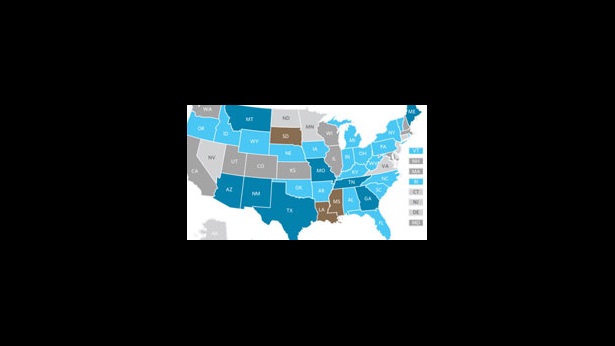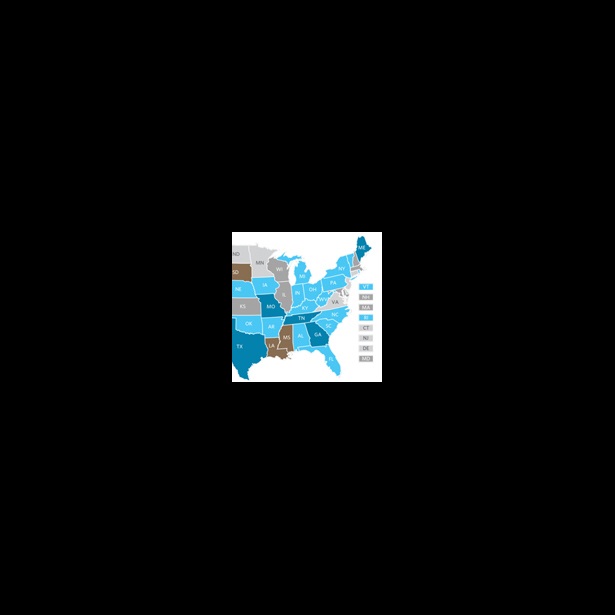Distribution of Grants Proposed for Elimination by White House Varies Widely
Impact of fiscal 2018 budget blueprint differs by state
The U.S. government funds a wide range of activities, including education, transportation, and health care, in all 50 states and the District of Columbia. Of the more than $145 billion in discretionary federal grants provided in fiscal year 2016, at least 9.1 percent is proposed for elimination in the budget blueprint for fiscal 2018 President Donald Trump released in March, according to the nonpartisan Federal Funds Information for States (FFIS).
Twenty of the federal programs that FFIS tracks have been recommended for termination, including the Low Income Home Energy Assistance Program, Community Development Block Grants, Supporting Effective Instruction State Grants, and 21st Century Community Learning Centers. (See full list below.) However, as the map shows, the impact of eliminating these programs differs widely by state, with proposed cuts ranging from 14.7 percent of discretionary federal grants in Maine to 3.5 percent in Alaska.
Notes: Discretionary spending, which is provided through appropriations acts, accounts for roughly a third of all federal spending and covers a wide range of federal programs and agencies but does not include mandatory funding, such as for Social Security and Medicare. Federal Funds Information for States monitors more than 240 federal programs that account for 91 percent of grants going to state and local governments and individuals, but this analysis addresses only the 20 programs tracked in the source document, and not other programs recommended for elimination.
Source: Federal Funds Information for States, “FY 2018 Budget Blueprint Cuts Many Grants, Provides Increase to Defense,” accessed March 2017
Programs proposed for elimination
Department of Commerce
- Economic Development Agency: Economic Adjustment.
- Economic Development Agency: Planning.
- Economic Development Agency: Public Works.
- Economic Development Agency: Technical Assistance.
- National Oceanic and Atmospheric Administration: Coastal Zone Management.
Department of Education
- Office of Innovation and Improvement: Supporting Effective Instruction State Grants.
- Office of Academic Improvement: 21st Century Community Learning Centers.
- Office of Federal Student Aid: Supplemental Education Opportunity Grants.
Department of Energy
- Office of Energy Efficiency and Renewable Energy: Weatherization Assistance Program.
- Office of Energy Efficiency and Renewable Energy: State Energy Program.
Department of Health and Human Services
- Office of Community Services: Low Income Home Energy Assistance Program.
- Office of Community Services: Community Services Block Grant.
Department of Housing and Urban Development
- Office of Community Planning and Development: Community Development Block Grant.
- Office of Community Planning and Development: HOME Investment Partnerships.
Department of Justice
- Office of Justice Programs: State Criminal Alien Assistance Program.
Department of Labor
- Employment and Training Administration: Senior Community Service Employment Program.
Independent agencies
- Appalachian Regional Commission: Local Development.
- Institute of Museum and Library Services: State Library Program.
- National Endowment for the Arts: State Programs.
- National Endowment for the Humanities: State Programs.
This analysis is part of Pew’s “fiscal federalism by the numbers” series.
Anne Stauffer directs the fiscal federalism initiative for The Pew Charitable Trusts. Justin Theal is a senior associate and Annelise Blair is coordinator on the team.










